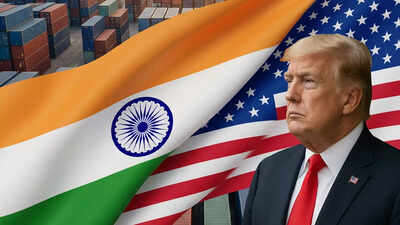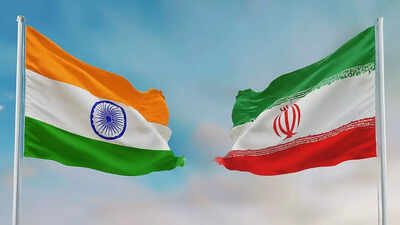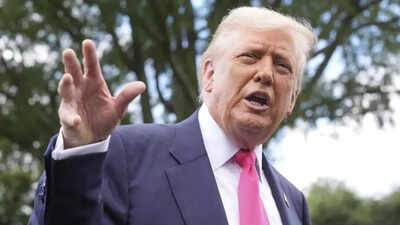Trump tariff war: Deal or no deal – why it won’t matter much for India

India-US trade deal: As ‘fast-paced’ talks between India and the US on an interim trade deal continue, the tariff rate that the Donald Trump administration will finally choose to impose on India is the biggest focus point. In April this year, Trump had announced a 26% reciprocal tariff rate on India. He later suspended tariffs for all countries to 10%, giving them room to negotiate a trade deal. The latest deadline for tariffs is now August 1, 2025.So where does India stand in the trade war that Trump has unleashed globally? What tariff rate would be advantageous to India? And, importantly if the tariff rate is not less than or near 20%, will India really be at a major disadvantage?In its latest report SBI Research has said that India will be able to diversify its export horizons to counter any negative impact of a less than favourable deal with the US.
Deal Or No Deal – India Has Enough Room & Comparative Advantage
“We believe that even if the India-US deal doesn’t come up as desired and 10% additional tariffs are imposed on India, there are various avenues for India to diversify its exports,” SBI Research has said in its report.The report also highlights an important point: India’s service exports continue to achieve unprecedented levels, projected to reach $387.5 billion in 2024-25, primarily supported by robust performance in IT, financial and business services sectors, suggesting minimal impact on overall export figures.Also Read | India-US trade deal: Why Indian importers are delaying customs clearance of American dry fruit; ‘opting to pay penalty because…’The United States has imposed tariffs on over 20 countries, with Asian countries seeing steeper tariff rates compared to India. This situation creates export possibilities for India to enhance its shipments to the US, particularly in sectors where it possesses revealed comparative advantage, the SBI report says.Following its trade agreement with the US, Vietnam now faces a reduced tariff rate of 20%. The extent to which India can negotiate similar tariff reductions with the US remains uncertain.Scope in Chemicals Exports: SBI’s analysis indicates that out of the top five US imports, India currently has a relative advantage only in chemicals. China and Singapore currently maintain larger export shares to the US market in this category. But, with China now subject to high tariffs, India has the potential to expand its chemical and pharmaceutical exports to the United States, the report says.Should India manage to seal a trade deal with tariff reductions below 25% (currently applicable to Singapore), it could gain a portion of the market share. “If India can capture 2% share from these countries in Chemicals exports, then it can add 0.2% to its GDP. Another 1% share can be seized from Japan, Malaysia and South Korea which now face higher tariff than India, thereby adding 0.1% to its GDP,” the SBI report adds.Apparel Exports: There exists potential to gain market share in apparel exports from Bangladesh, Cambodia and Indonesia. India presently holds 6% of US apparel imports, and securing an additional 5% from these nations could contribute 0.1% to GDP.
Looking Beyond US:
- India is currently reviewing the
ASEAN-India Free Trade Agreement to address tariff irregularities and strengthen the “rules of origin” provisions, which have enabled substantial Chinese imports through ASEAN nations. - ASEAN is a major trading partner for India, with bilateral trade reaching $123 billion in 2024-25. The share of ASEAN in India’s exports has reduced over the years, while the share of imports has remained stable. India can enhance its exports to ASEAN and prevent dumping of goods from China through ASEAN countries, says SBI Research.
- Furthermore, opportunities exist to enhance exports to Asian nations currently facing elevated US tariffs. India could increase its shipments of Chemicals, Agricultural goods, Livestock & its products, Waste and Scrap (particularly metal scrap) and specific Animal and Vegetable Processed Products to these markets.
Donald Trump’s Tariff Letters
Since last week, Trump has been on a letter sending mission, with tariff updates sent to over 20 countries. India has so far not received any letter from the US President, possibly due to his own admission that the two countries are nearing a trade deal.Whilst 17 countries have received reduced tariffs compared to the April 2 announcement, six nations – Brazil, Canada, Japan, Brunei, Philippines and Malaysia – face increased tariff impositions.Also Read | India-US trade deal: Will Donald Trump go for less than 20% tariff rate for India? Top 10 developments to track
India-US Trade Deal: Where Do Things Stand?
“The final call on the India-US trade deal will be in the coming days, with the mini trade deal likely to be announced by mid-July. As per the latest information, India has already presented a final ‘decent offer’ from its side, which will be reviewed by those calling the shots at the Capitol. Basis indications, India’s proposal covers goods trade worth around $150 billion to $200 billion between the two countries,” says the report.Last week while talking about sending tariff letters, Trump said, “We’ve spoken to everybody. …it’s all done. I told you we’ll make some deals, but for the most part, we’re going to send a letter…Now we’ve made a deal with United Kingdom. We’ve made a deal with China. We’re close to making a deal with India.”Even as India has firmly said that it does not believe in working on ‘deadlines’ for trade agreements, a team of Commerce Ministry officials are currently in the US for another phase of negotiations.Commerce Minister Piyush Goyal has said that talks on a trade deal between India and the US are progressing at a ‘fast pace’. India has hardened its stance on agriculture and dairy products and reports suggest that these two points of contention are likely to be left out of the interim trade deal.Also Read | ‘Very fast pace….’: India-US trade deal talks pick momentum ahead of Trump’s deadline; Piyush Goyal shares important update





